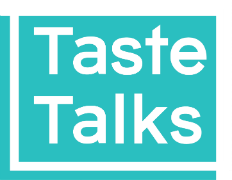About two months ago, David Chang penned a note for Lucky Peach that stumped me more than any bit of philosophy ever has—this coming from someone who took one requirement-filling philosophy class in college, during which we mostly debated things like the morality of selling organs.
Chang’s note addressed the practice of taking pictures of food in restaurants, and specifically referenced his decision to lift a controversial ban of said practice at his New York City restaurant, Momofuku Ko. The reasoning was simple—taking photos disrupted the flow of service. Chang goes beyond just logistics, though.
“We were in a bubble for seven years,” he writes. “Outside of the shaved foie gras and couple others that were written about in the press, Ko thrived in a vacuum. No one knew what the fuck we were making, almost ever. There was a sense of excitement; there was a sense of journey; there was a sense of discovery.”
The piece blew my mind. For one thing, it couldn’t have been written before Instagram, before the Internet, before Yelp, hell, even before the camera phone. Sharp created the first camera phone in 2001. It was ugly and clunky and you had to connect it to a computer to even see the pictures you had just taken. Do you think Sharp would have ever predicted that this exciting, silver piece of clunky technology would significantly affect how one of food’s biggest names ran his restaurants fifteen years later? Honestly, when I think about that, I also think about how anyone can even know anything at all. What power does technology have? How else will social media change our future? The compounded layers of science and innovation that needed to be pioneered before Chang would be able to write this letter are like the rings of a tree, when you look at these things you can understand how every element played a part of making the structure you’re currently standing on.
But even Chang admits he didn’t foresee how irritated people would become by their rule. So they lifted the ban six years later, and a brand new set of challenges presented itself. “All of a sudden we were under the microscope, and people were expecting a narrative that made sense to them. We didn’t anticipate how much people would be on top of everything we’re doing. People walk in and they’re like, Oh, we ‘ ve seen this before . That was crazy for us. The expectations went from How do they do this? to I know how they do this. ”
After reading this, I feel as if David Chang was giving all of us diners permission to read between the lines. He’s letting us in on a secret that he’s hesitant to openly admit: That our photos can influence how he builds his menu, or his next restaurant. He’s saying, “look how much power you have, Laura. (But not like, you , obviously, I mean the general ‘you.’ You only have 259 followers, and let’s be honest, around twenty of those are probably bots, right?)”
Chang has a point. I’ve never been to the Grand Canyon before, but I know what it looks like, because of photos that people have taken and posted to the Grand Canyon’s Yelp page (five stars!). Have the pictures I’ve seen affected my desire to visit in person? Yes, actually. The mystery is gone. Like Chang’s guests now, and like all restaurant-goers, I suppose I’m expecting a certain narrative when I finally do go: I want the sense of awe and amazement, the warm colors, an echo.
But five million people still visit the Grand Canyon every year. I still really want to visit and take a picture of my own. And why? What does nature have to offer us? Nature doesn’t even try. Is that what we love? Effortlessness? When a faceless, unfeeling force erodes rock or splits the earth or erupts into the ocean, we’re moved to the point of poetry, and that’s okay. You’re expected to feel that way and expected to take photos because you’re not in a restaurant, in the context of a civilized “dining experience,” under the imposition of these rules that we’ve made up for ourselves about what dinner should and should not be.
Why do I photograph the food that I eat? It’s not to preserve a memory, like I try to tell myself. I’m not printing out these pictures and framing them on my wall. Most of the time, I forget they even exist until my iPhone forces me to delete photos to free up storage. But I snap, I post, and I share just like anyone else.
A chef, at least the good kind, commits a lifetime of work and stress and sweat and swearing and scars and blood to eventually produce the plate of food that’s sitting in front of me, by way of many roundabout directions: the obvious ones, like culinary school, and the less obvious ones, like yelling at vendors to find and get the best possible whatever it is you’re eating. As the daughter of a chef and restaurant owner, that is what I love, and it’s what I see when I look at a plate. This is what what moves me to pull out my camera phone — the truest kind of art is all these ugly elements coming together to make something beautiful, something as breathlessly casual as the Colorado River breezily ripping into the earth only to leave behind a massive, gorgeous void.
That kind of art is what I’ve always understood food and cooking to be. And a great plate of food, whether stunningly pristine or a profound, authentic mess, deserves to be photographed because food offers us even more than art. Food offers us substance — sustenance with the capacity and ability to taste really fucking good . It’s elevated survival. What could be more important? What is more worthy of documenting?
The world is wiped clean and the pictures we took of our dumb brunches this weekend are the only things left. And they’re able to tell whoever comes along next: this is how you do it. This is how you stay alive enough to do literally everything else.










